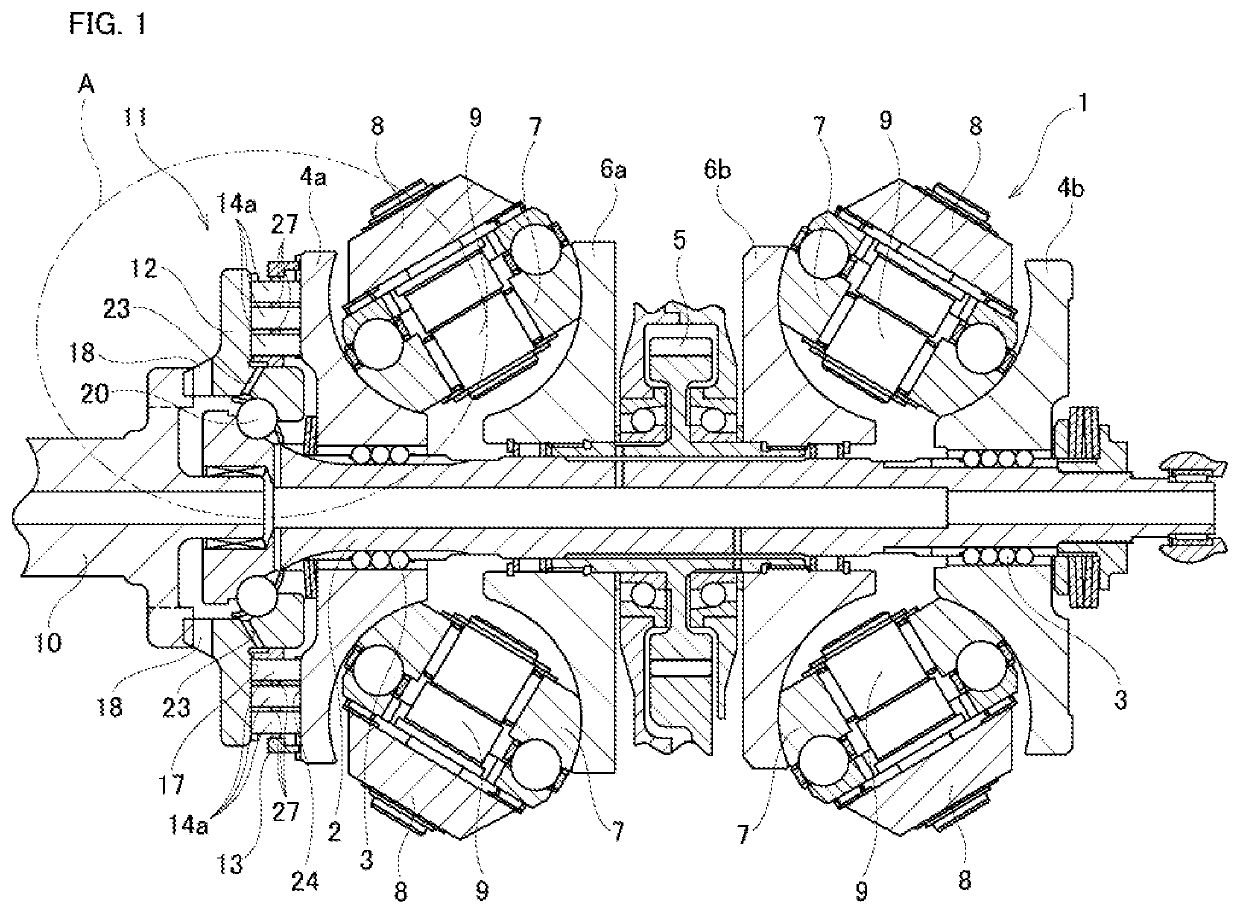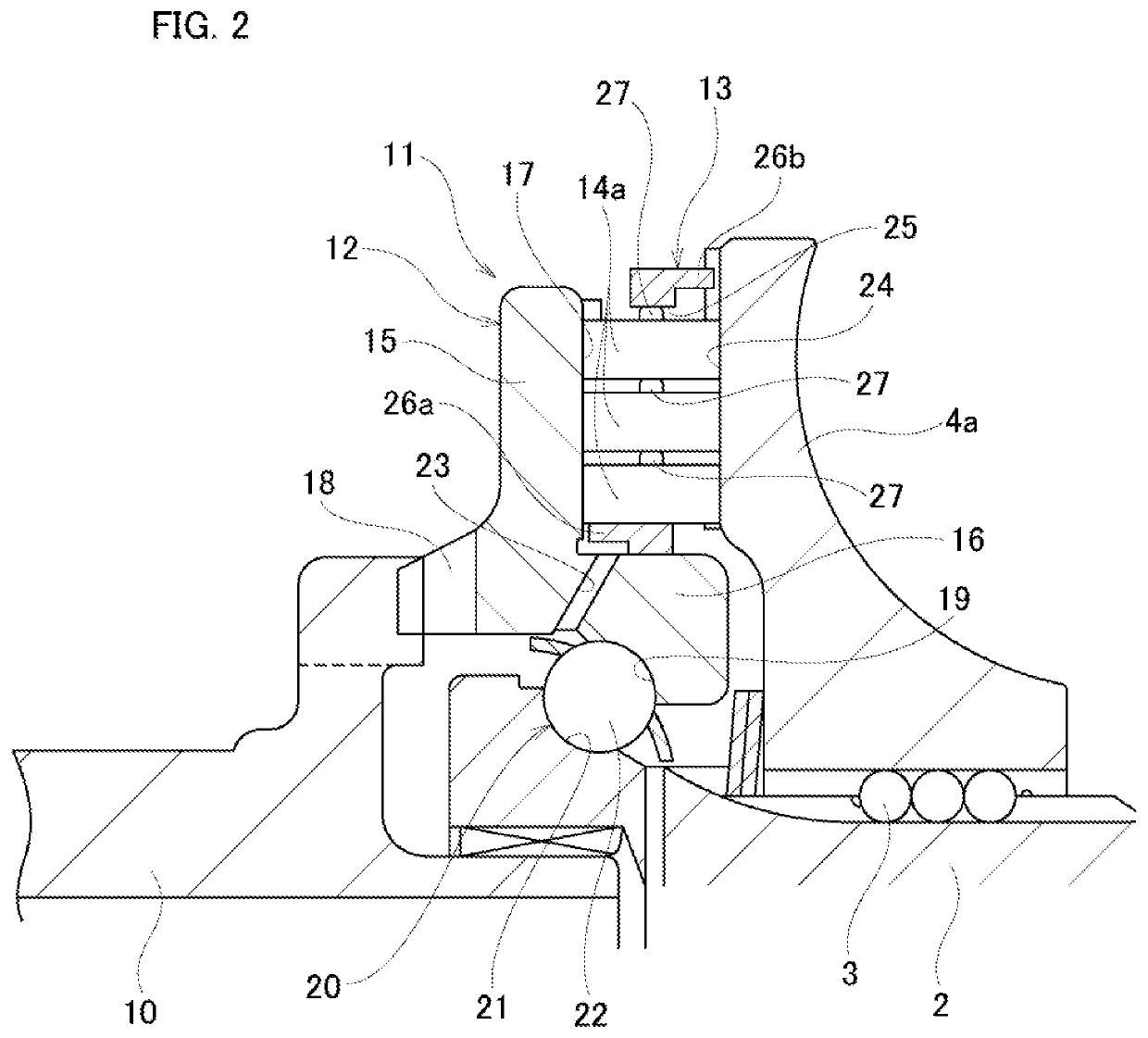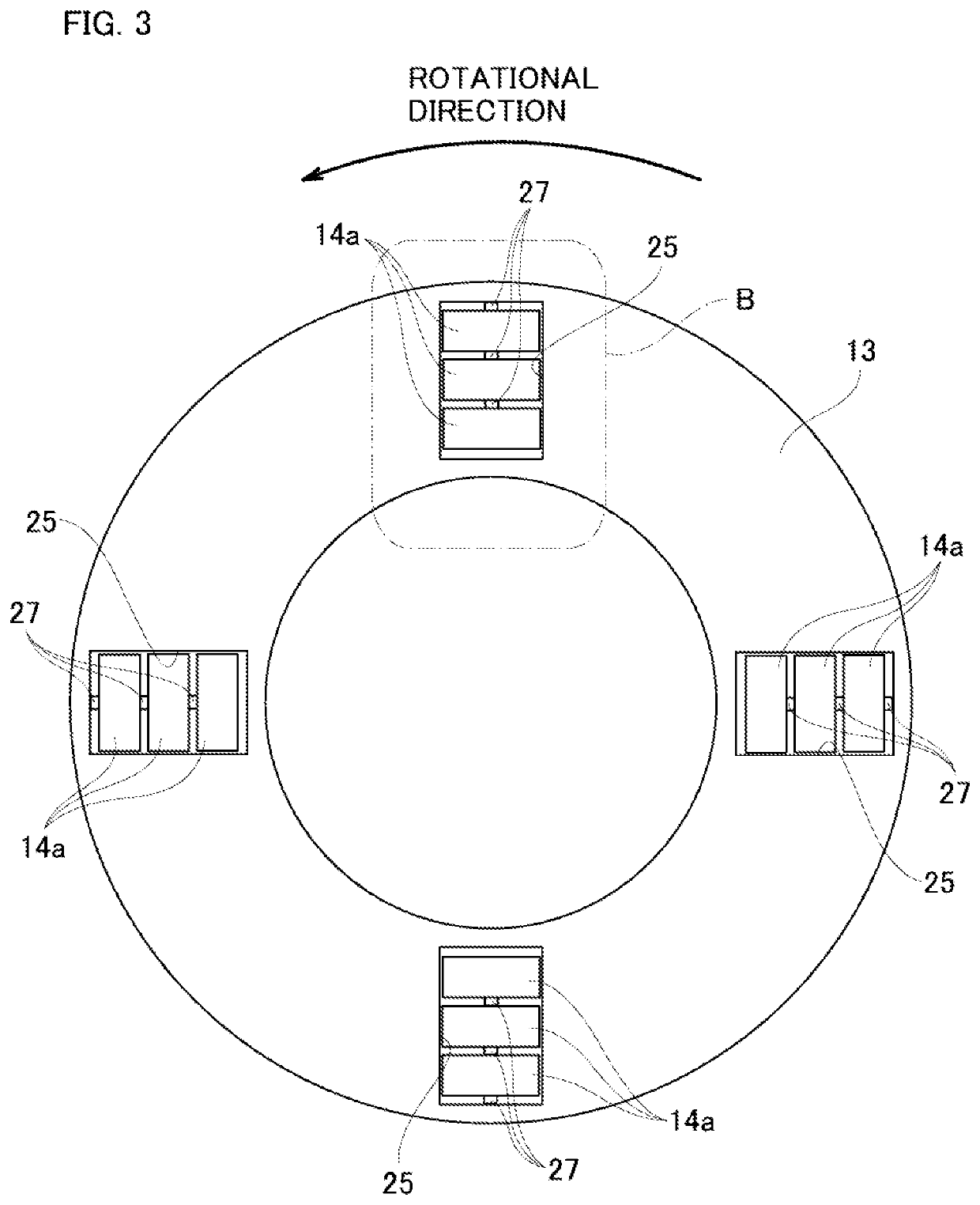Pressing device for toroidal continuously variable transmission
a technology of pressing device and toroidal transmission, which is applied in the direction of friction gearing, belt/chain/gearing, friction gearing, etc., can solve the problems of increasing the dimensions and thus the weight of the pressing device, reducing the radius of curvature, and generating large frictional force easily
- Summary
- Abstract
- Description
- Claims
- Application Information
AI Technical Summary
Benefits of technology
Problems solved by technology
Method used
Image
Examples
first example
[0055]FIG. 1 to FIG. 6 illustrate a first example of an embodiment of the present invention. The toroidal continuously variable transmission 1 is a double cavity type and includes a pair of outside disks 4a, 4b and inside disks 6a, 6b, between which two cavities are formed in which power rollers 7 are arranged. The pair of outside disks 4a, 4b are supported around both end portions in the axial direction of the input shaft 2 via ball splines 3 so as to be able to rotate coaxially and synchronously with each other. The outside disks 4a and 4b have toroidal curved surfaces that are concave surfaces having an arc-shaped cross section on the inside in the axial direction facing each other. However, the present invention can also be applied to pressing device for a single-cavity toroidal continuously variable transmission that includes one input-side disk and one output-side disk.
[0056]A gear 5 is supported around a middle portion in the axial direction of the input shaft 2 so as to be a...
second example
[0082]FIG. 7 and FIG. 8 illustrate a second example of an embodiment of the present invention, which is a modification of the first example of an embodiment. In this example, as in the case of the first example of an embodiment, intermediate sliding members 27a are attached to one end surface in the axial direction (upper end surface in FIG. 7 and FIG. 8) of the respective rollers 14b. However, in this example, the shape of the respective intermediate sliding members 27a is different than in the first example.
[0083]The intermediate sliding member 27a has a substantially cylindrical shape on the base side that is attached to one end surface in the axial direction of the roller 14b, however a spherical convex surface 45 is formed on the tip end side. As a result, the intermediate sliding member 27a is such that instead of surface contact with a mating surface, the tip portion thereof can be brought into point contact with the mating surface. Here, in order to reduce hysteresis, or in ...
third example
[0085]FIG. 9 illustrates a third example of an embodiment of the present invention, which is a modification of the first example. In this example, as in the first example, an intermediate sliding member 27b is attached to one end surface in the axial direction (upper end surface in FIG. 9) of the roller 14c. However, in this example, the shapes of the roller 14c and the intermediate sliding member 27b, and the manner of attachment of the intermediate sliding member 27b to the roller 14c are different from those in the first example.
[0086]The roller 14c has a convex portion 33 that projects in the axial direction at the center portion of one end surface in the axial direction. The tip end surface of the convex portion 33 is a flat surface that extends in a direction orthogonal to the center axis of the roller 14c, or in other words, parallel to the end surface in the axial direction of the roller 14c. The intermediate sliding member 27b includes a disk portion 34 and a cylindrical sh...
PUM
 Login to View More
Login to View More Abstract
Description
Claims
Application Information
 Login to View More
Login to View More - R&D
- Intellectual Property
- Life Sciences
- Materials
- Tech Scout
- Unparalleled Data Quality
- Higher Quality Content
- 60% Fewer Hallucinations
Browse by: Latest US Patents, China's latest patents, Technical Efficacy Thesaurus, Application Domain, Technology Topic, Popular Technical Reports.
© 2025 PatSnap. All rights reserved.Legal|Privacy policy|Modern Slavery Act Transparency Statement|Sitemap|About US| Contact US: help@patsnap.com



